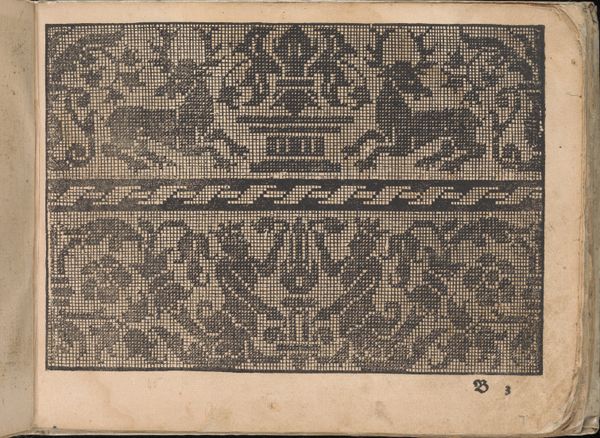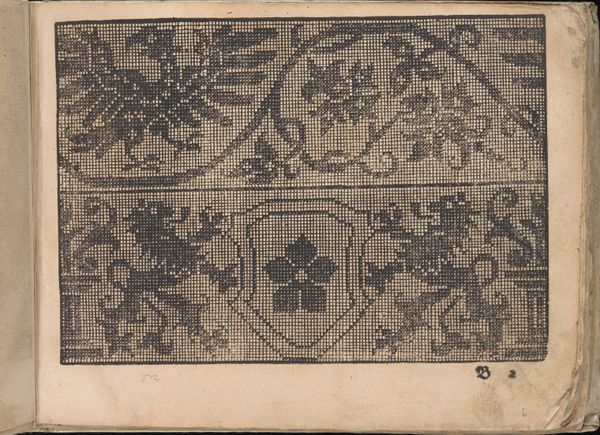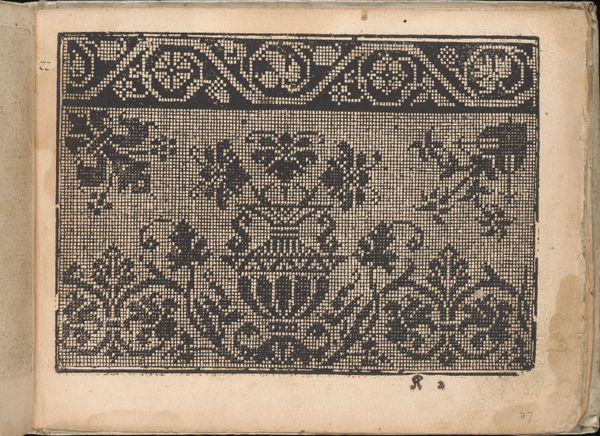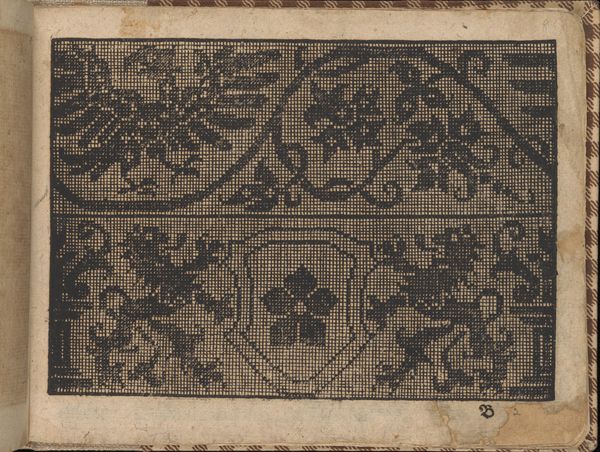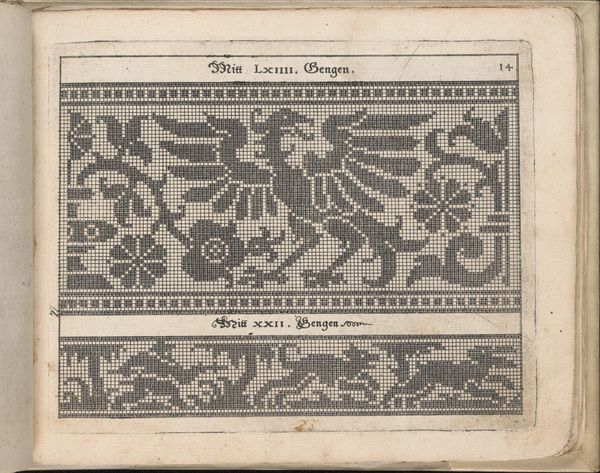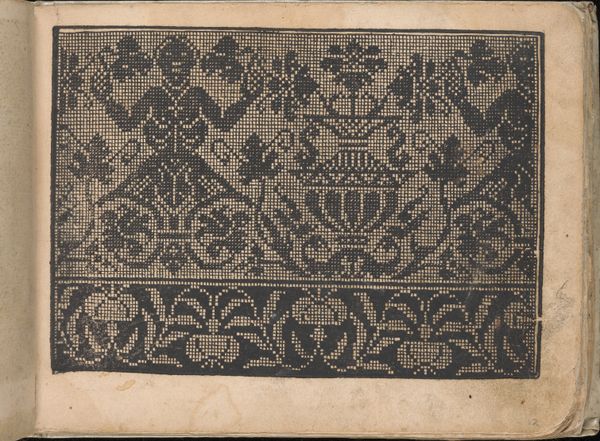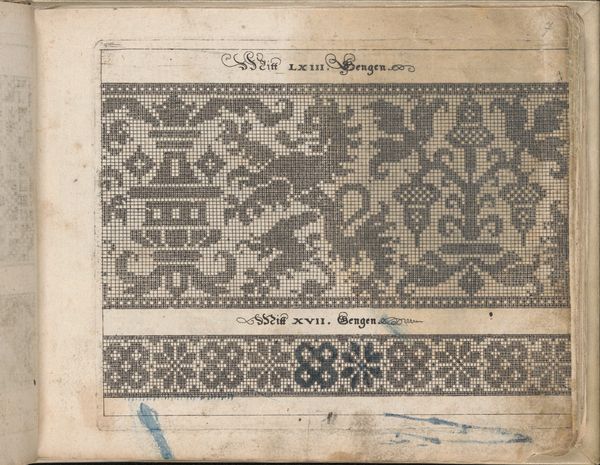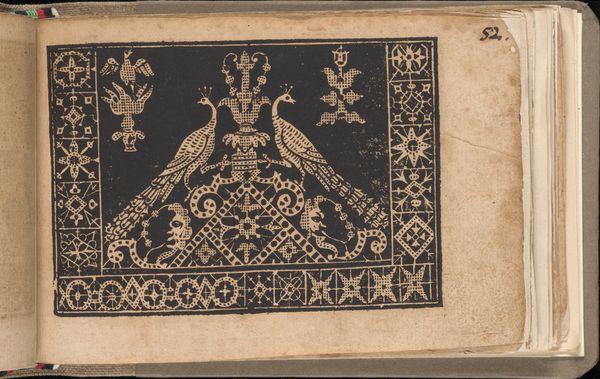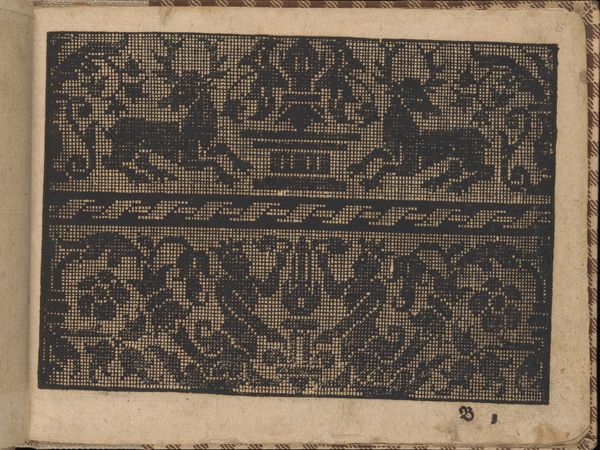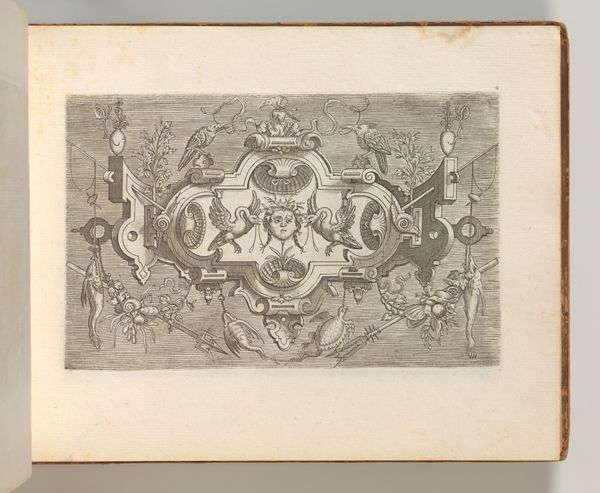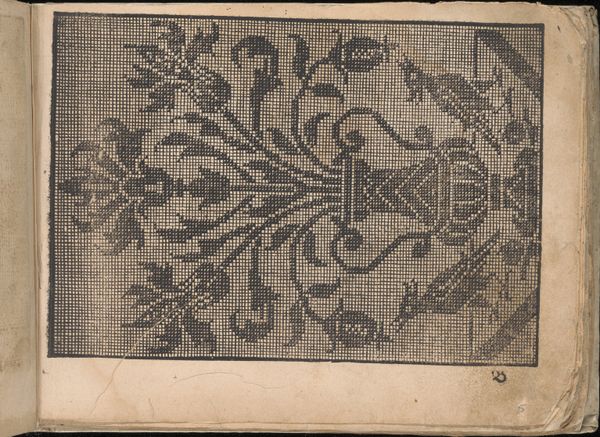
drawing, graphic-art, print, engraving
#
drawing
#
graphic-art
#
pen drawing
# print
#
book
#
11_renaissance
#
engraving
Dimensions: Overall: 6 1/8 x 7 7/8 in. (15.5 x 20 cm)
Copyright: Public Domain
Curator: Here we have a page from "Neu künstlich Modelbuch," a pattern book created by Bernhard Jobin in 1598. It's currently held at the Metropolitan Museum of Art. Editor: My first thought is… hypnotic. It feels ancient and digital at the same time. Like a very low-resolution mosaic. The animals especially. Curator: It's an engraving, meant to be a guide for lacemakers and embroiderers. Notice how the designs are composed of what appears like little squares. It reduces designs down to a very manageable process, and also allows you to scale the patterns depending on the size of canvas or the thread thickness. Editor: Absolutely. And that's where the "materialist" in me perks up! We are witnessing not just a decorative piece but a functional tool. This was mass-produced, reproduced by the needle, circulated, consumed! Think of the skilled labor that these designs facilitated! The entire *economy* embedded in this single page. It collapses the distinction between art and craft in the most unapologetic way. Curator: I am so drawn into its world of symmetrical animals holding...what are those, trophies? Is that some heraldic thing, some familial marker being proudly displayed through embroidery? The level of care...someone poured their entire heart, quite possibly someone whose name we'll never know, into each careful stitch. Editor: Right? Whose hands brought this pattern to life, and what stories did *they* whisper into the fabric as they worked? It's tempting to get lost in the artistry and symbolism, but thinking about the means of its creation opens up an entirely different vista. It feels revolutionary because you get to replicate a really expensive looking thing by yourself. Democratic and rebellious at once. Curator: Looking at the roses near the lower edge now makes me wonder. Were the embroiderers encouraged to stick precisely to Jobin’s plan, or was there space for improvisation? Or did they adapt it out of sheer practical necessity? Was the act of adaptation also a creative collaboration? I mean this model-book is clearly just one piece of a conversation— Editor: --Exactly, and so if Jobin gets the authorship, we should be sure that that concept also gets stitched and woven along the materials and tools these other humans used along the way! Curator: What an amazing thing to contemplate, as the labor and material become so intimately and indistinguishably entwined in the end product. Editor: This Modelbuch page, it's not just a pretty pattern, it is a diagram of economy and labor.
Comments
No comments
Be the first to comment and join the conversation on the ultimate creative platform.
